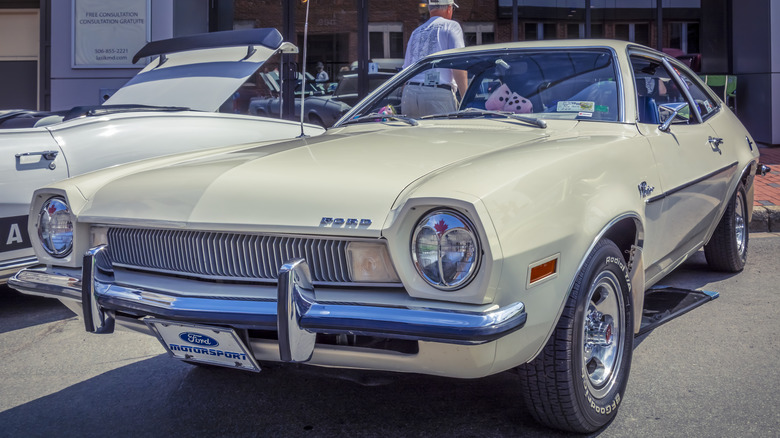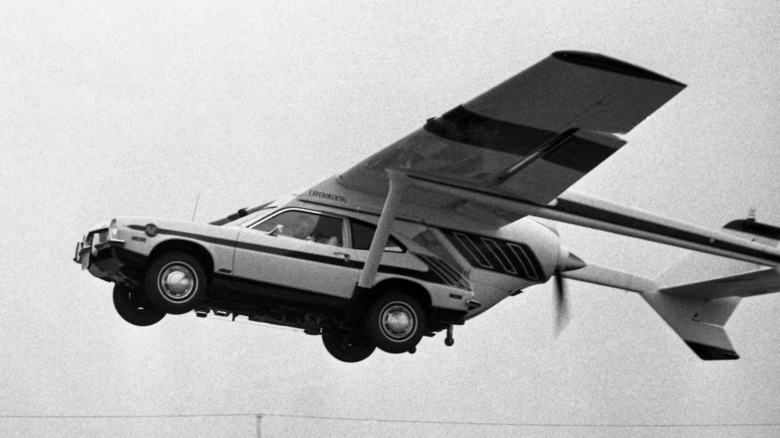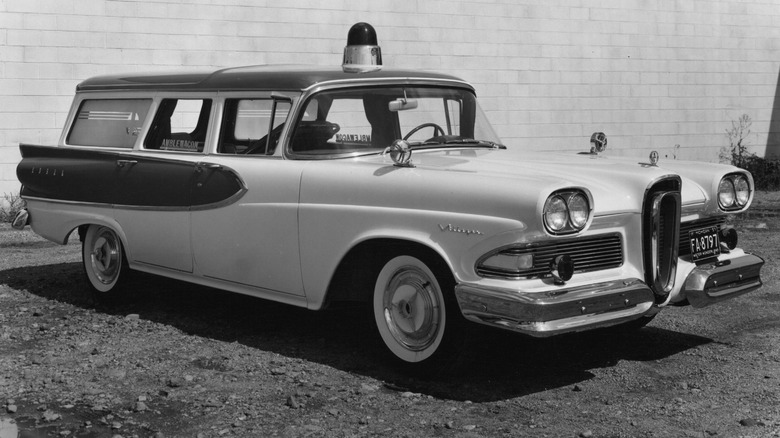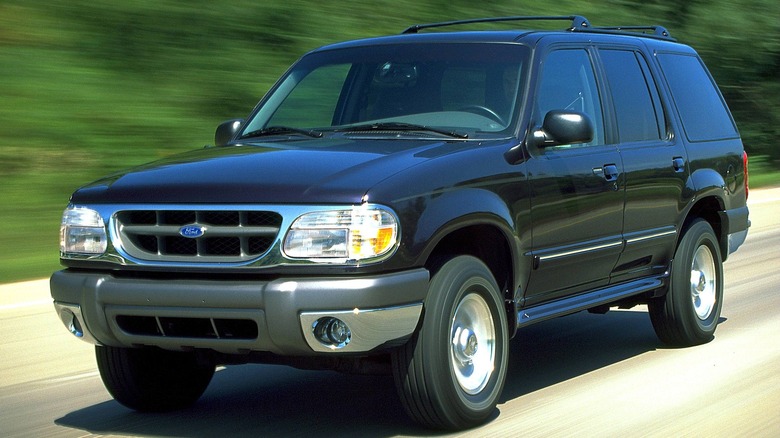3 Of The Most Hated Ford Models Ever Made
The Ford Motor Company can produce cars that bring out strong emotions in people. Sometimes, it's love or amazement, like the 1968 Mustang Fastback that Steve McQueen drove in "Bullitt." There are vehicles that revolutionized the automotive industry, like the Model T. Then there are the ones that made people ask why they were made in the first place. At times, Ford would get something wrong, like the mood of the public, or the position of the gas tank. These problems alone are enough to sink a model, but for some cars, public opinion and history have been much harsher. In its 121-year history, Ford has made mistakes in engineering, PR, and business management, and suffered in public for the decisions made.
The cars here created multiple headaches for Ford. Some of them have become collector's items despite, or maybe because of their problems. Others are destined for obscurity even if they made headlines when they were in production.
The Pinto was great from the rear wheels forward
One Ford that people seem to love to hate is the Ford Pinto. When Ford introduced its first subcompact car in 1971, just one day after Chevrolet introduced the Vega, it reflected the times. It was inexpensive and got good gas mileage. Performance was generally poor, though, with a six-cylinder engine, a manual transmission, and disk brakes, the car's character changed significantly. But the Pinto had a design problem in that the gas tank was placed between the rear axle and the very back of the car. If the car was rear-ended with a moderate amount of force, it would rupture the gas tank and could start a fire.
The design issue was not the only flaw. In lawsuits, it was shown that Ford decided that paying victims of accidents involving rear-ended Pintos was cheaper than actually fixing the problem. The unwise business decision only sealed the fate of the car and tarnished Ford's reputation. Even though roughly three million Pintos had been sold, the car is now a laughingstock, even 45 years later.
The Edsel sometimes came with final assembly instructions
Long before the Pinto crashed and burned, there was the Edsel. Unlike the Pinto, which fit changing market conditions very well but died because of a design problem exacerbated by poor management, the Ford Edsel failed in terms of advertising, design, marketing, and even manufacturing.
First, in the early 1950s, Ford saw an opportunity in the mid-level market niche. However, by 1958, when the Edsel finally appeared in showrooms, consumer tastes had changed and, to make matters worse, an economic recession set in. Once the big decisions on the car were made, no basic marketing research was done to follow the market and ensure a proper fit for the Edsel line in Ford's lineup, which also included Mercury and Lincoln.
Ford decided to cut a corner and not dedicate assembly lines to the new cars. Fords and Mercuries were built with runs of Edsels in between. Line workers, worried about meeting quotas, sent incomplete cars to dealers with instructions on how to finish them. The result was a PR nightmare.
The Explorer introduced the term 'rollover hazard' to the world
The 2002-2006 4th-generation Ford Explorers were known for their transmission problems in particular. However what brought next-level dislike from the public was the 3rd generation version. The failure of the 1990s Explorers to remain vertical brought the term 'rollover' to the public. The Firestone tire scandal highlighted a problem with drivers' increasing interest in heavier, taller vehicles — an interest that continues today. It also brought out mutual corporate finger-pointing between Ford and Firestone that tarnished both companies' images.
Both companies were at fault, and the combination proved deadly. The Firestone plant that made tires for the Explorer used a process that made the tires prone to breaking along the sidewall. The Explorer's front suspension design, combined with a heavy and high center of gravity, left it vulnerable to rolling over in sharp turns. Unwary drivers were particularly at risk of losing control of the vehicle. The problems themselves and the responses brought changes to tire manufacture and added rollover ratings, but over 200 people died in the process.



